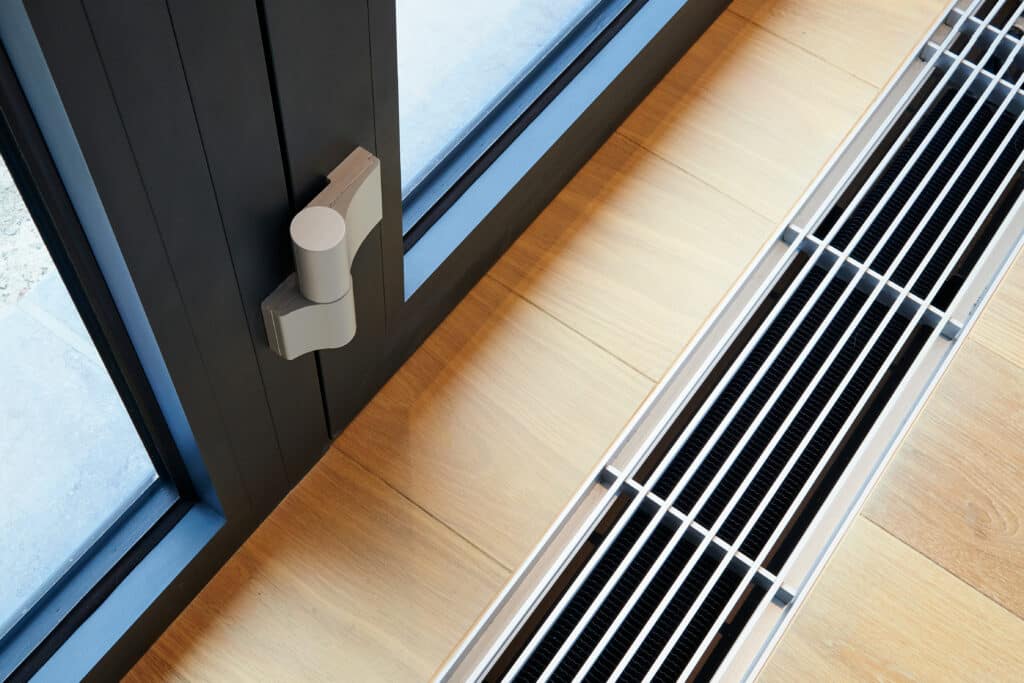
24/7 Emergency Phone Line
Family Owned & Operated
Licensed, Bonded & Insured

There’s nothing worse than a cold draft disrupting your cozy winter evening. Drafts not only reduce comfort but also make your heating system work harder, increasing energy bills. At Bloomington Heating & Air, we’re here to help you understand and eliminate drafts in your home. Drafts in your house are a huge pain, reducing the comfort of inside. On top of that, drafts can reduce the efficiency of your heating system, raising heating bills during the winter. This is why our HVAC tips from Bloomington Heating & Air are here to teach you how drafts happen and what you can do to stop them.
If you are noticing a draft in your home, follow this guide from Bloomington Heating & Air. Contact us today for prompt and dependable Bloomington heater repairs along with our other HVAC services. Schedule a Bloomington HVAC appointment today!
What Causes Drafts in Your Home?
Drafts occur due to two phenomena: pressure and suction. As cold air blows against your house during the winter months, it can create a pressure difference between the inside and outside of your home, leading to a suction effect that pulls warm air out through small gaps in your walls and out of your house. As the warm air escapes your home, cold air manages to squeeze its way in, and that cold air that you feel is a draft.
Common Sources of Drafts in Your Home
Drafts often sneak in through small gaps in your house, as the warm air needs a place to escape from and cold air needs a way to sneak in. One of the most common spots a draft occurs is around your home’s window frames, especially if they are older or exceptionally large. We recommend checking every window frame, as well as any door frames that lead to the outside, as they can often become unseated over time, creating a gap. Finally, when the usual places aren’t the source of the draft, check to ensure the insulation in your attic or basement is secure.
How to Prevent Drafts and Improve HVAC Efficiency
1. Repair Gaps With Caulking
If you found a draft coming from your window frames, we recommend using caulk to fill any holes or install weatherstripping. Caulk is a great, cheap option to repair gaps in windows instead of investing in heavy-duty, weatherproof windows. If you are going to use caulk, make sure to take care of any problems right away, as dried caulk is harder to clean up. Caulk takes about 24 hours to fully cure, but this can change depending on the temperature and humidity.
2. Make Sure Your Doors Are Correctly Installed
As drafts often come in through cracks in your doors, it is important to make sure that they are correctly installed in their frames. If you are handy, you can take the door off of its hinges and reinstall it. While the door is off its hinges, double-check to see if there is any give in the hinges. Next, make sure that the rubber threshold is in its proper position, as it can be easy for it to move out of place as you enter and exit the house.
3. Use A Drafty Door Stopper
During the warmer months, drafts in doors and windows are often harder to detect, but they become much more noticeable when winter comes around. You can put drafty door stoppers at the bottom of your doors and windows. You can find them at most home improvement retailers, or you can make your own! If sewing isn’t your thing, you can use pool noodles, which probably aren’t getting much use during winter anyhow! However, by cutting them in half lengthwise, they become a practical solution that can last for the winter.
4. Apply Bubble Wrap
One D.I.Y solution to stop drafts in your home is to apply bubble wrap to the inside of your old, drafty windows. The bubbles work to trap air for insulation while still letting light come through. The bigger the bubbles, the better the insulation and the more effective this insulation is. This is an easy and effective way to stop a draft without replacing your windows.
Say goodbye to drafts and high heating bills! Let Bloomington Heating & Air help you create a warm, energy-efficient home. Contact us today for Bloomington heating maintenance services you can count on.
